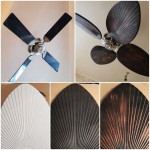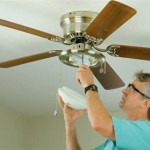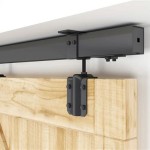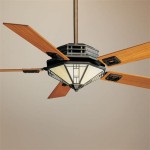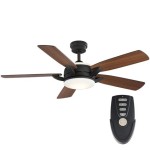What Size Ceiling Fan For Small Living Room
Selecting the appropriate size ceiling fan for a small living room is crucial for both comfort and aesthetics. An undersized fan will struggle to circulate air effectively, while an oversized fan can overpower the space and appear visually disproportionate. Proper sizing ensures optimal airflow, energy efficiency, and a balanced look within the room. This article will delve into the factors that influence ceiling fan size selection for small living rooms, providing guidelines and considerations for making an informed decision.
The primary purpose of a ceiling fan is to provide air circulation. In a small living room, this translates to efficiently cooling the space in the summer and helping to distribute warm air in the winter. An appropriately sized fan can reduce the reliance on air conditioning and heating systems, leading to energy savings. Furthermore, a ceiling fan can enhance the overall comfort of the room by creating a gentle breeze and preventing stagnant air pockets. The size of the fan directly impacts its ability to achieve these objectives.
Beyond functionality, the visual impact of a ceiling fan is significant. A fan that is too large can make a small room feel even smaller and more cramped. Conversely, a fan that is too small may appear insignificant and fail to contribute to the room's overall design. Finding the right balance between functionality and aesthetics is key to creating a comfortable and visually appealing living space. Considerations such as ceiling height, room dimensions, and existing décor should all be taken into account when choosing a ceiling fan size.
Determining the Appropriate Fan Size Based on Room Dimensions
The most fundamental factor in determining the correct ceiling fan size is the square footage of the room. Square footage is calculated by multiplying the length of the room by its width. Once the square footage is known, it can be used as a guide to select the appropriate fan blade span. General guidelines typically suggest the following:
- Rooms up to 75 square feet: A ceiling fan with a blade span of 36 inches or less is generally sufficient.
- Rooms between 76 and 100 square feet: A ceiling fan with a blade span of 42 inches is often a suitable choice.
- Rooms between 101 and 150 square feet: A ceiling fan with a blade span of 44 inches is typically recommended.
These guidelines are a starting point, and other factors may influence the final decision. For instance, the shape of the room can play a role. A long, narrow room may benefit from a slightly larger fan than a square room of the same square footage. Similarly, the presence of furniture and other obstructions can affect airflow and necessitate a larger or smaller fan.
It's crucial to measure the room accurately to ensure that the selected fan size is appropriate. Using a measuring tape, determine the length and width of the living room in feet. Multiply these two measurements to calculate the square footage. Once the square footage is known, refer to the guidelines above to narrow down the options. Keep in mind that these are just recommendations, and individual preferences and room characteristics may warrant adjustments.
In addition to square footage, the height of the ceiling is a critical consideration. Low ceilings require fans that are flush-mounted or hugger-style to maximize headroom. Standard ceiling fans with downrods may not be suitable for rooms with low ceilings, as they can create a feeling of claustrophobia. High ceilings, on the other hand, may require longer downrods to ensure that the fan is positioned at the optimal height for effective airflow.
Considering Ceiling Height and Downrod Length
Ceiling height significantly impacts the selection of a ceiling fan. The general rule of thumb is that the bottom of the fan blades should be at least 7 feet above the floor. This clearance ensures that individuals can walk under the fan without hitting their heads. In rooms with standard 8-foot ceilings, flush-mount or hugger-style fans are often the best choice. These fans are designed to sit close to the ceiling, providing adequate airflow without compromising headroom.
For rooms with ceilings higher than 8 feet, a downrod is typically required. A downrod is a metal extension that connects the fan motor to the mounting bracket. The length of the downrod should be chosen based on the ceiling height to ensure that the fan blades are positioned at the optimal height. The following guidelines can be used to determine the appropriate downrod length:
- 9-foot ceilings: A 6-inch downrod is generally recommended.
- 10-foot ceilings: A 12-inch downrod is often appropriate.
- 11-foot ceilings: An 18-inch downrod may be necessary.
- 12-foot ceilings: A 24-inch downrod could be required.
These are just general recommendations, and the specific downrod length may need to be adjusted based on individual preferences and the design of the fan. It's important to consider the overall aesthetics of the room when choosing a downrod length. A downrod that is too long can make the fan appear disproportionate, while a downrod that is too short may not provide adequate airflow.
When installing a ceiling fan, it is essential to follow the manufacturer's instructions carefully. Ensure that the mounting bracket is securely attached to a structural support in the ceiling. Use appropriate hardware and tools to prevent the fan from wobbling or becoming dislodged. If you are not comfortable installing the fan yourself, it is best to hire a qualified electrician to do the job.
Evaluating Fan Features and Design Elements
In addition to size and ceiling height, several other factors should be considered when selecting a ceiling fan for a small living room. These include the fan's features, design, and energy efficiency. Choosing a fan with the right combination of these elements can enhance the comfort and aesthetics of the room.
Modern ceiling fans often come equipped with a variety of features, such as remote controls, dimmable lights, and reversible motors. Remote controls allow for convenient adjustment of fan speed and light intensity from anywhere in the room. Dimmable lights provide versatility and can create a more relaxing ambiance. Reversible motors allow the fan to be used in both summer and winter. In the summer, the fan should rotate counterclockwise to create a cooling breeze. In the winter, the fan should rotate clockwise at a low speed to distribute warm air that has risen to the ceiling.
The design of the ceiling fan should complement the existing décor of the living room. Fans are available in a wide range of styles, from traditional to contemporary. Choose a fan that matches the overall aesthetic of the room and enhances its visual appeal. Consider the color and finish of the fan blades and motor housing. Lighter colors can make a small room feel more open and airy, while darker colors can add a touch of sophistication. The style of the fan blades can also impact the overall look of the room. Sleek, minimalist blades are often a good choice for modern spaces, while ornate, decorative blades may be more suitable for traditional settings.
Energy efficiency is another important consideration when selecting a ceiling fan. Look for fans that are Energy Star certified. These fans meet strict energy efficiency guidelines and can help save money on electricity bills. The energy efficiency of a fan is typically measured in terms of airflow efficiency (CFM per watt). A higher CFM per watt rating indicates a more energy-efficient fan. When comparing different models, pay attention to the CFM per watt rating to ensure that you are choosing a fan that will save energy and reduce your carbon footprint.
In summary, selecting the right size ceiling fan for a small living room requires careful consideration of several factors, including room dimensions, ceiling height, fan features, and design. By following the guidelines outlined in this article, individuals can make an informed decision and choose a fan that will provide optimal airflow, energy efficiency, and aesthetic appeal.

Ceiling Fan Size Guide Delmarfans Com

Ceiling Fan Size Guide Delmarfans Com

Ceiling Fan Size Guide Delmarfans Com

Quick Guide A Ceiling Fan Ideas Advice Lamps Plus

Ceiling Fan Size Guide Delmarfans Com

Ceiling Fan Size Guide Delmarfans Com

Ceiling Fan Selection Mounting Guide

What Size Ceiling Fan Do You Need For Your Room Dan S City Fans Parts Accessories

Pin By Mirko Powell On Fundamental Of Lighting Ceiling Fan Size Large Fans

How To Choose A Ceiling Fan For Comfort And Style
Related Posts

